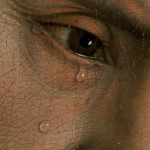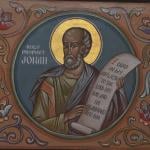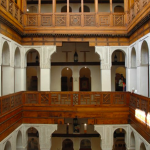Rome, Italy, Jun 3, 2015 / 04:02 am (CNA/EWTN News).- The Benedictine Monks of Norcia spend their lives in prayer and labor – “ora et labora” – chanting the psalms and producing crafts to support themselves. This week, they also released an album meant to share their prayer with the world – music, they say, that has what your soul needs. “The monks spend hours every day chanting the Mass and the Divine Office. It’s part of the air we breathe. There’s a lot of pollution in our world, and so the pure oxygen of Gregorian chant is like a breath of fresh air,” Father Cassian Folsom, prior of Norcia's Benedictine monastery, told CNA. The monastery on June 2 released its first major label album, BENEDICTA: Marian Chant from Norcia, through De Montfort Music together with Decca Classics and Universal Music Classics. The album, available at Amazon, includes 33 tracks, drawn largely from the liturgical chants with have characterized the life of Benedictine monks for more than 1,000 years. “The chant is beautiful, and our souls need beauty in order to grow and thrive. The chant is the Church's love song to her Lord; it expresses the love-longing of the monk’s heart,” reflected Fr. Cassian. “Now monks are ordinary men, and what we experience is, in a real way, the experience of Every Man. I'm convinced that this beautiful chant will give spiritual nourishment to those who listen to it.” The chants include hymns, antiphons, and responses from the liturgy, ranging from well-known pieces such as the Salve Regina and the Ave Maria, to hidden gems such as the Virgo Parens Christi. “The particular selection we made is unique because it includes not only chants from the Mass (sequences that are no longer used, for example) and the Divine Office (including solemn responsories that are rarely heard any more) but also chants from the repertoire of popular devotion. Some pieces are from the common of the Blessed Virgin, but many are proper to specific feasts,” said Fr. Cassian. The album also includes several capitula – biblical readings of only a few verses, chanted very simply – which are read in the Divine Office. Fr. Cassian noted that the capitula were included because “the short Scripture reading is an important part of all the Day Hours, and we wanted to involve our listeners in an experience of prayer.” The CD even includes a new chant, Nos Qui Christi Iugum (We who have received Christ's yoke), which was composed specifically for Benedicta. “Fr. Basil Nixen, our choirmaster, is very talented; he has both musical and poetic skills. It was he who wrote the text and composed the music for this piece,” Fr. Cassian explained. “The image used in the title, 'Christi Iugum', is from the Rule of St. Benedict, which describes the monk as one who bears the yoke of Christ – like a good ox who puts his whole weight into the work at hand. In this piece, Mary is called 'Regina Monachorum', queen of monks, obviously a very fitting title coming from the monastic tradition. Fr. Basil weaves together images from the Rule with a rich Marian piety. In the melody there are hints of the solemn tone used for one of the readings of Christmas Matins.” In addition to their desire to share their own prayer with listeners, the monks also hope that Benedicta could contribute to the provision of better music at Catholic parishes. “It would be wonderful if our album could inspire a re-discovery of Gregorian chant in parish liturgies,” Fr. Cassian reflected. You know, Sacrosanctum Concilium [Vatican II's constitution on the liturgy] strongly promoted the chant. There is a terrible misconception that Vatican II did away with Latin and Gregorian chant. Quite the contrary! We really need to rediscover what the Council said about liturgical music.” He added that “in addition to the classical repertoire in Latin, lots of good work has been done in the U.S. in the area of English chant,” and that “these resources are readily available.” De Montfort Music has had tremendous success sharing the sacred music of similar communities, including the Dominican Sisters of Mary, Mother of the Eucharist. It has released several albums with the Benedictines of Mary, Queen of Apostles, and in 2014 its releases accounted for three of Billboard's Top 5 Classical Traditional Album Imprints. The monastery at Norcia – the birthplace of St. Benedict – was founded in 1998, and is now comprised of 18 men, half of whom are American, and whose average age is only 33. Sales of Benedicta will help support the monastery, where Fr. Cassian said “there are always projects in the works!” The community is working on its grange, a property it holds outside the walls of Norcia. “There are the ruins of an old Capuchin monastery on the property, and we’re renovating the church and adjacent spaces so that the monks can go there for their monthly 'hermit day' or for longer periods of retreat. We’ve also started a vegetable garden and planted fruit trees.” Outside monastic circles, the community is known for its craft brewery, Birra Nursia. “The beer, if I say so myself, is very good!” exclaimed Fr. Cassian. “We learned the art from the Trappist monks in Belgium. Our master brewer, Br. Francis, and his capable team work with real dedication and skill.” However, “At the moment our beer is not available in the U.S., but we’re working on that. In the meantime, you have to come to Norcia!” Read more















